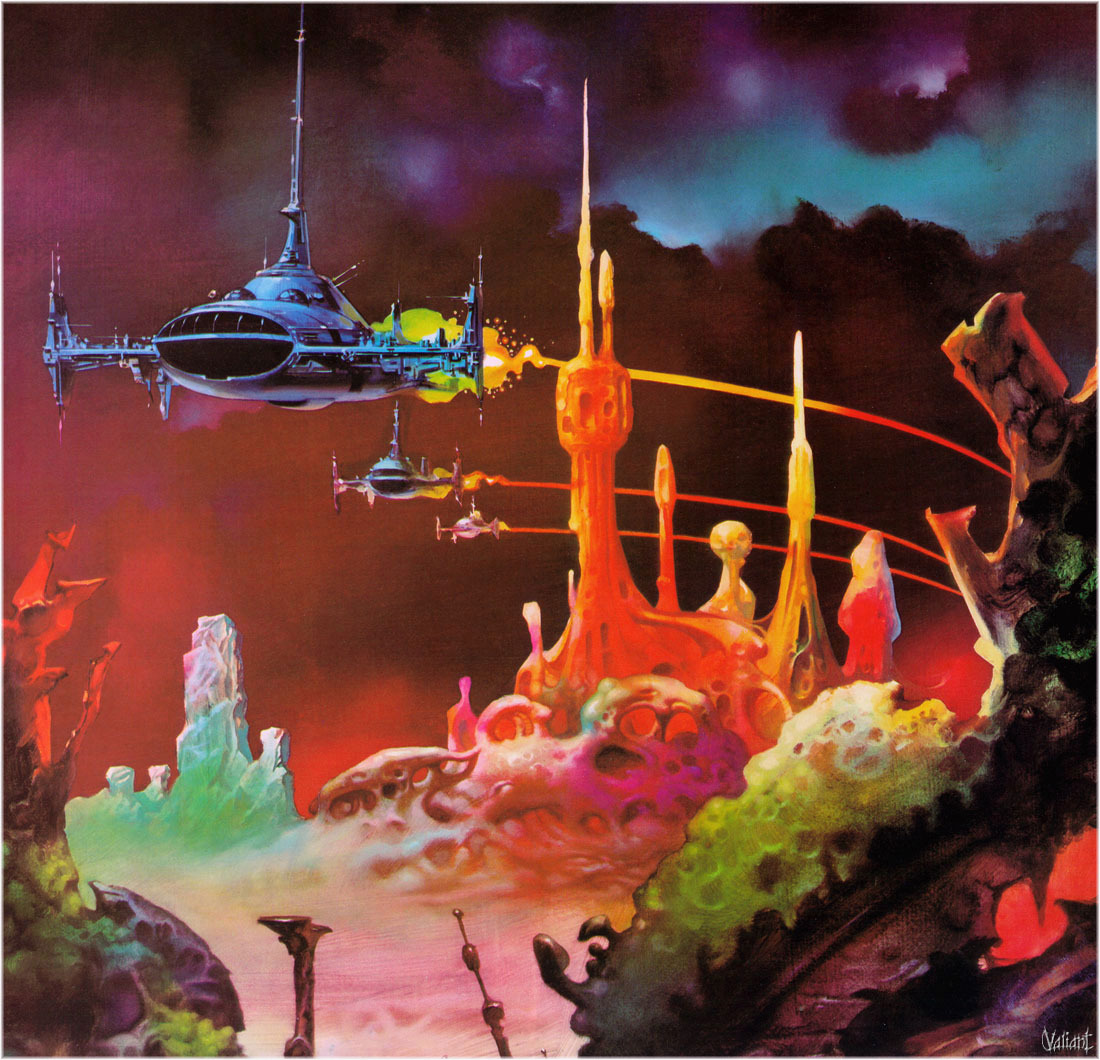There are a lot of good planet generators in science fiction rpgs from the very science-minded ones in GURPS Space and the original version of 2300AD to the more adventure-oriented ones of Stars Without Number and Starblazer Adventures, with Traveller and others somewhere between the two poles. None of these really focus on the quick creation of the sort of cliched (and I don't mean that negatively) worlds that populate pulpy or comic book space opera and space fantasy.
I've been toying with working on a series of random generators for exactly those sorts of settings. A more granular series of tables is probably to come, but I wanted to present an alternative "quick stock planet" alternative list first:
- Amazon Planet: Women warriors who either have no males or keep them in as slaves. The opposite is the misogynistic Man's World. The lack of the other sex may result from a Secret.
- Anachronistic World: Strangely resembles a historical Earth period, culture, genre, or work of fiction.
- Bucolic Backwater: A sleepy agrarian world where no one expects anything interesting to happen. Its native culture or cultures are likely to be irritatingly quirky.
- Casino World: Vegas in space.
- Crossroads World: A myriad of races and cultures congregate for trade, religious pilgrimage, or the like.
- Desert Planet: Whether hot or cold, this world is bone dry and harsh. Better to stick to the few oasis or canal cities and stay away from the volatile, deep desert-dwellers.
- Ecumenopolis: A planet-spanning city.
- Forest/Jungle Planet: Titanic trees (and possibly tree-towns) and an over-abundance of wildlife.
- Hellworld: Incredibly hostile environment whether due to ultra-deadly fauna, toxic atmosphere, poisonous biosphere or some other factor. There is always a good reason to travel here, however.
- Ice World: Sheathed in thick glaciers, this planet's inhabitants are inured to cold or live in compounds protected from the elements.
- Junk World: Detritus from an ancient civilization (or a current one) covers this world.
- Pleasure Planet: A world famous, or infamous, for its hedonistic pursuits. Likely a vacation destination.
- Paradise Planet: An idyllic world, either obviously highly advanced or hiding behind a faux-primitivism. where all wants and needs are fulfilled. Of course, that may just be how things appear and it is, in fact, a False Paradise.
- Prison Planet: The most notorious criminals in the galaxy are kept here, possibly with political prisoners. Likely to somewhat inhospitable natively, otherwise it would be used for another purpose.
- Ruined World: A post-apocalyptic planet, scarred by the fall of a previous civilization, perhaps long ago, perhaps relatively recently.
- Swamp World: Humid and fetid; full of things that slither and crawl.
- That’s No Ordinary Planet! Roll on the sub-table below.
- War World: Inhabitants have been locked in an age old conflict between two blocs, factions, or a neighboring world. The landscape is devastated and the people mistrustful, heavily armed, and possibly mutated.
- Water World: Planet-spanning oceans with floating cities or mer-folk.
- Wild World: Only rudimentary civilization at best, but plenty of dangerous megafauna.
That's No Ordinary Planet! Sub-table
- It's alive
- It's artificial
- It's a gigantic spaceship
- It's a petrified giant
- It's an egg
- It's a shell around a slumbering space god-monster.











%2B001-049-Earth-37.jpg)








